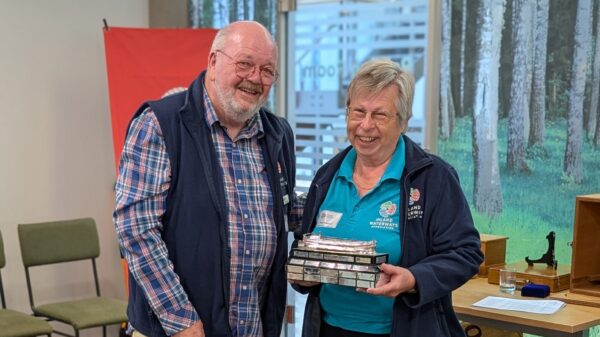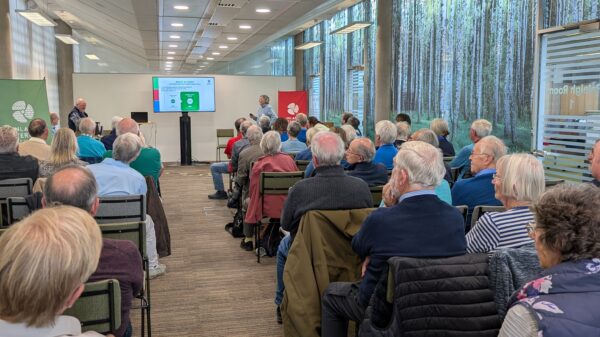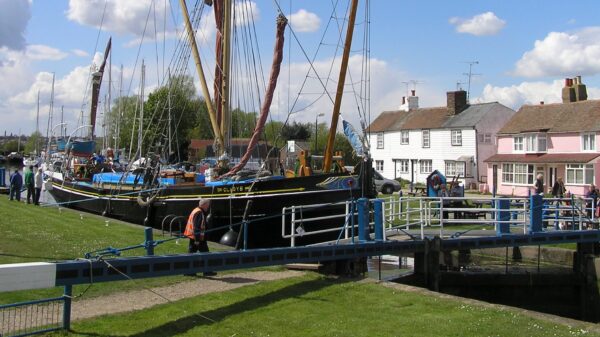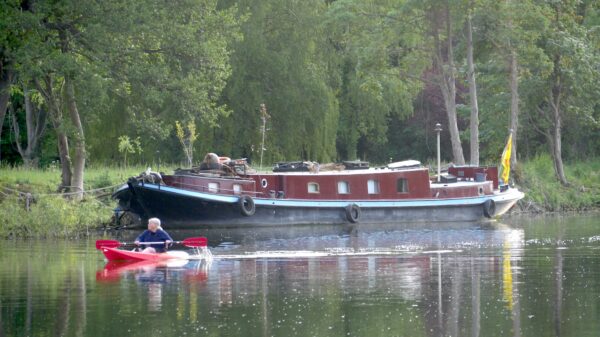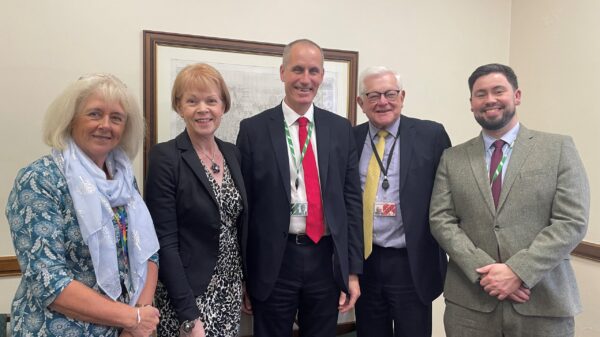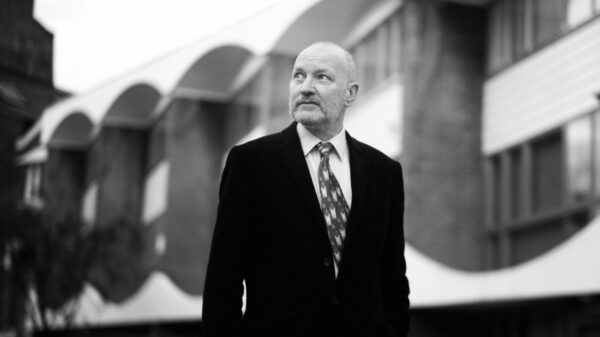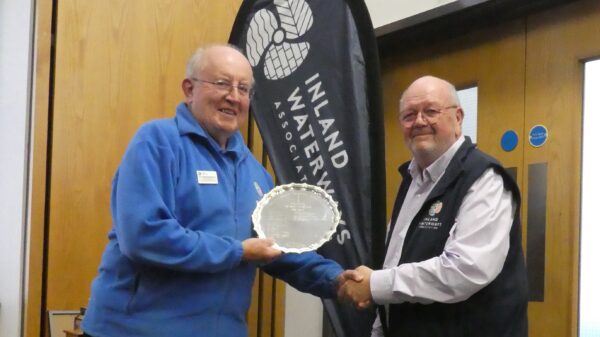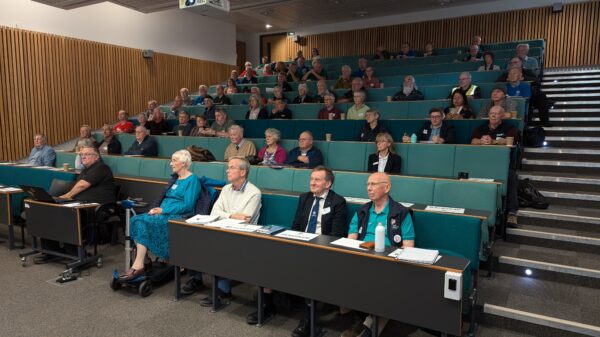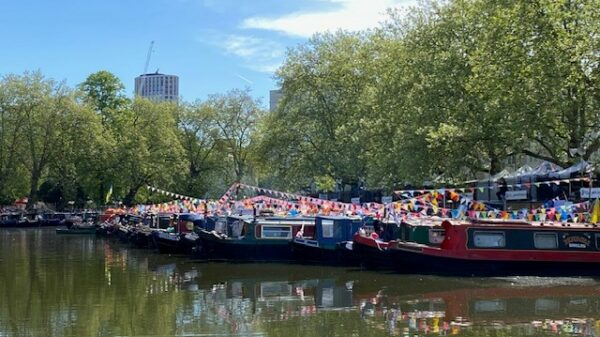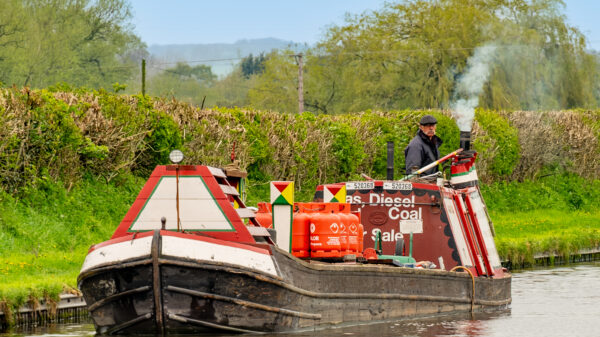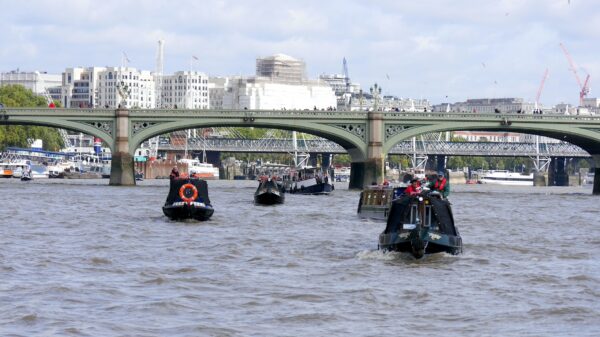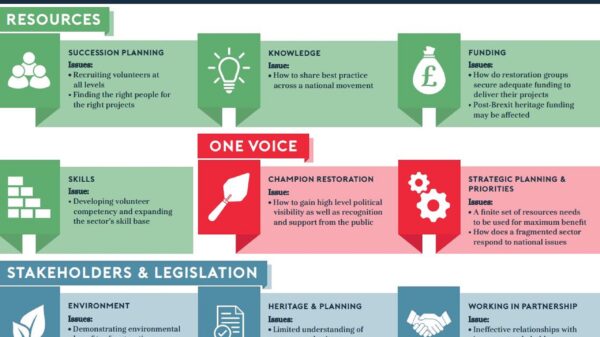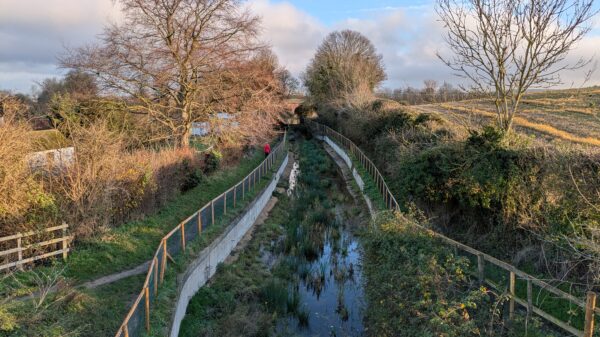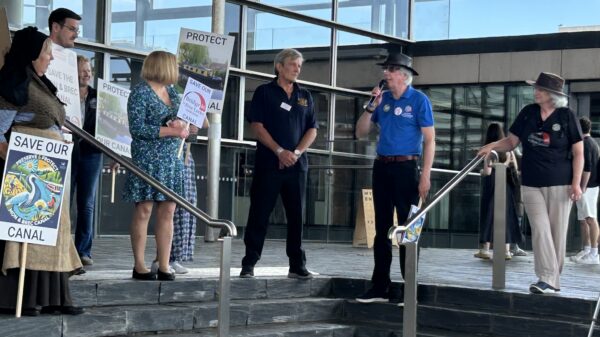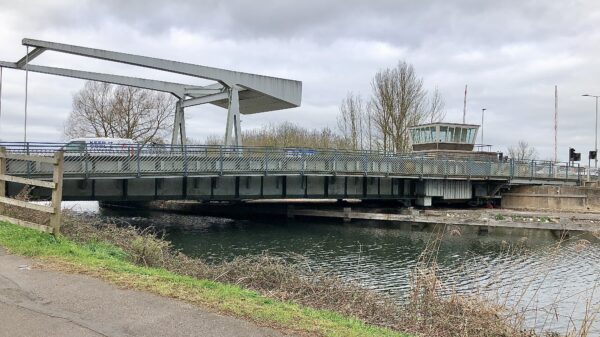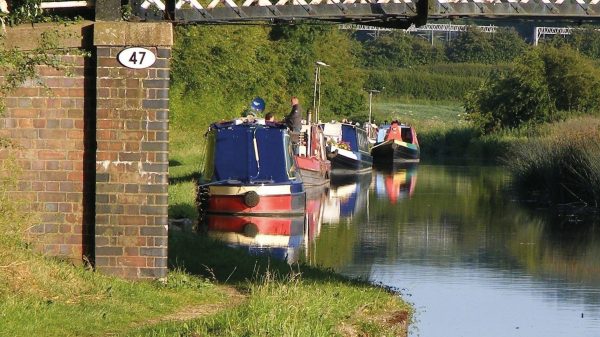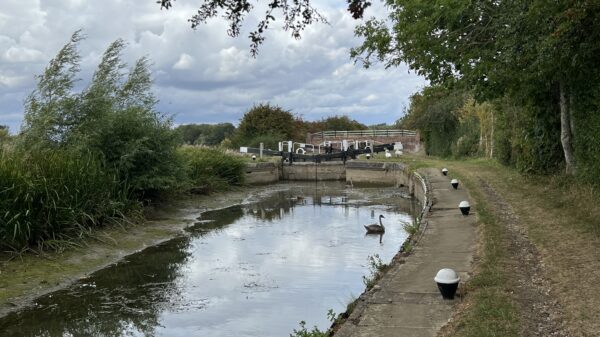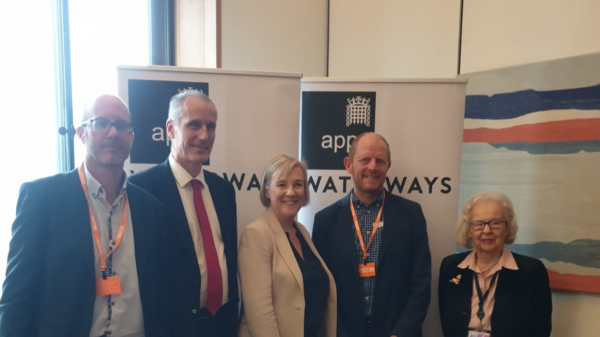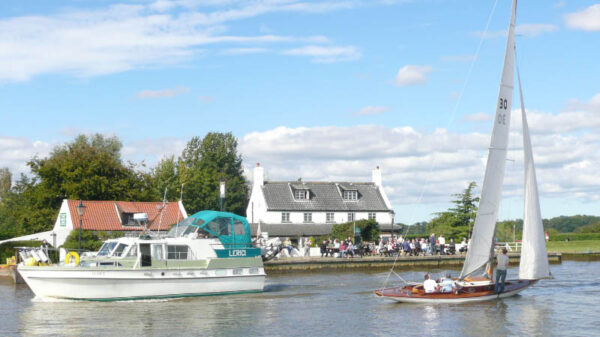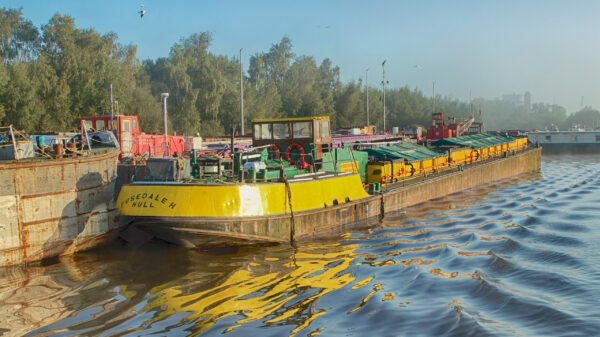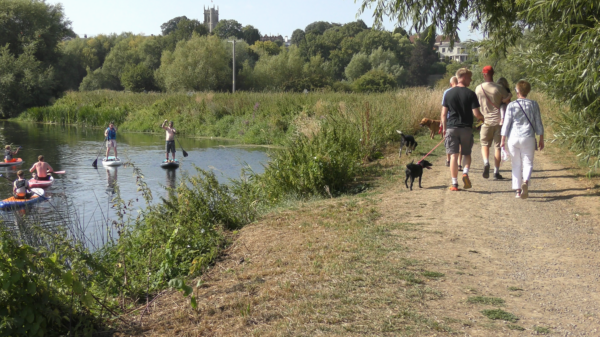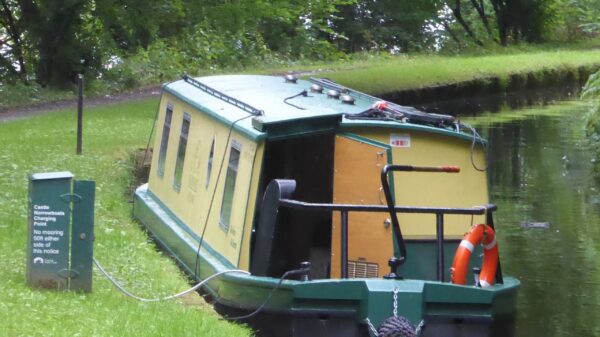The building that gave birth to IWA is singled out from other houses in the terrace by a blue plaque. “Robert Aickman,” it reads, “author and co-founder of the Inland Waterways Association lived and worked here.”
Erected in September 2015, the blue plaque is a fitting reminder of a pivotal figure in the struggle to save Britain’s canals from institutionalised neglect and destruction – and the meeting on 15th February 1946 that formalised his (and like-minded colleagues’) commitment to that cause.
Robert Aickman was an extraordinary man who, years after his death, still continues to court controversy and, more importantly, to inspire others. To these waterways enthusiasts, his former house at 11 Gower Street, London, remains their spiritual home.
11 Gower Street
No 11 stands at Gower Street’s southern end, close to Bedford Square, one of the finest preserved Georgian squares in London. Aickman always believed in appearances and, in particular, in having the right address. He only rented No 11, and the upper floors at that, but just living there was enough.
It was a suitably salubrious address from which to base his work as ‘Founder of the Inland Waterways Association’ – a self-given title, not entirely accurate, that he held to his end. During the years IWA worked from No 11, before moving in stages to larger premises in Regents Park Road, he never charged the association for its use.
Built in 1785, the house is spread over five floors. Aickman rented the upper floors, with a large front room which he used as an office-cum-meeting room. It was in here that IWA’s inaugural meeting took place, with Aickman elected chairman, and Tom Rolt the honorary secretary. Photos of Aickman at work in the room show him sitting in a chair with wall-to-wall books behind him – he once extravagantly claimed there wasn’t a book worth opening that he hadn’t already read.
Waterways legacy
At the unveiling of the Gower Street blue plaque, the very essence of Aickman’s achievement was summarised by Les Etheridge, former IWA Chairman: “Those who enjoy the waterways today owe him a great deal. Without Robert’s ‘unreasonableness’ we would have lost the Oxford Canal south of Banbury, the southern Staffs & Worcester Canal, and perhaps the Leicester Summit as well. And without his tenacity in saving the Macclesfield Canal, the restorations of the Peak Forest and Ashton Canals would have been much less likely. What a difference that would have made to the waterway network we enjoy today.”
Les Etheridge went on to describe Aickman’s finest hour – the reopening of the South Stratford Canal on the 11th July 1964 in the presence of the Queen Mother. It was, he said, “a pivotal moment – conclusively demonstrating that volunteer-led restoration was a viable model for the recovery of the waterways.”
At that 1964 event Aickman told the Queen Mother that he now intended to start working on the restoration of the Upper Avon Navigation, which was still in a state of dereliction. The Queen Mother vowed that, if he did, she would be pleased to formally reopen it. Ten years later, on 1st June 1974, she met her promise and the reopening ceremony was held at the Upper Avon’s new top lock. Among those in the official entourage was the Poet Laureate John Betjeman, also a prominent IWA member on Aickman’s persuading, and he read a poem he had written for the occasion, which concluded:
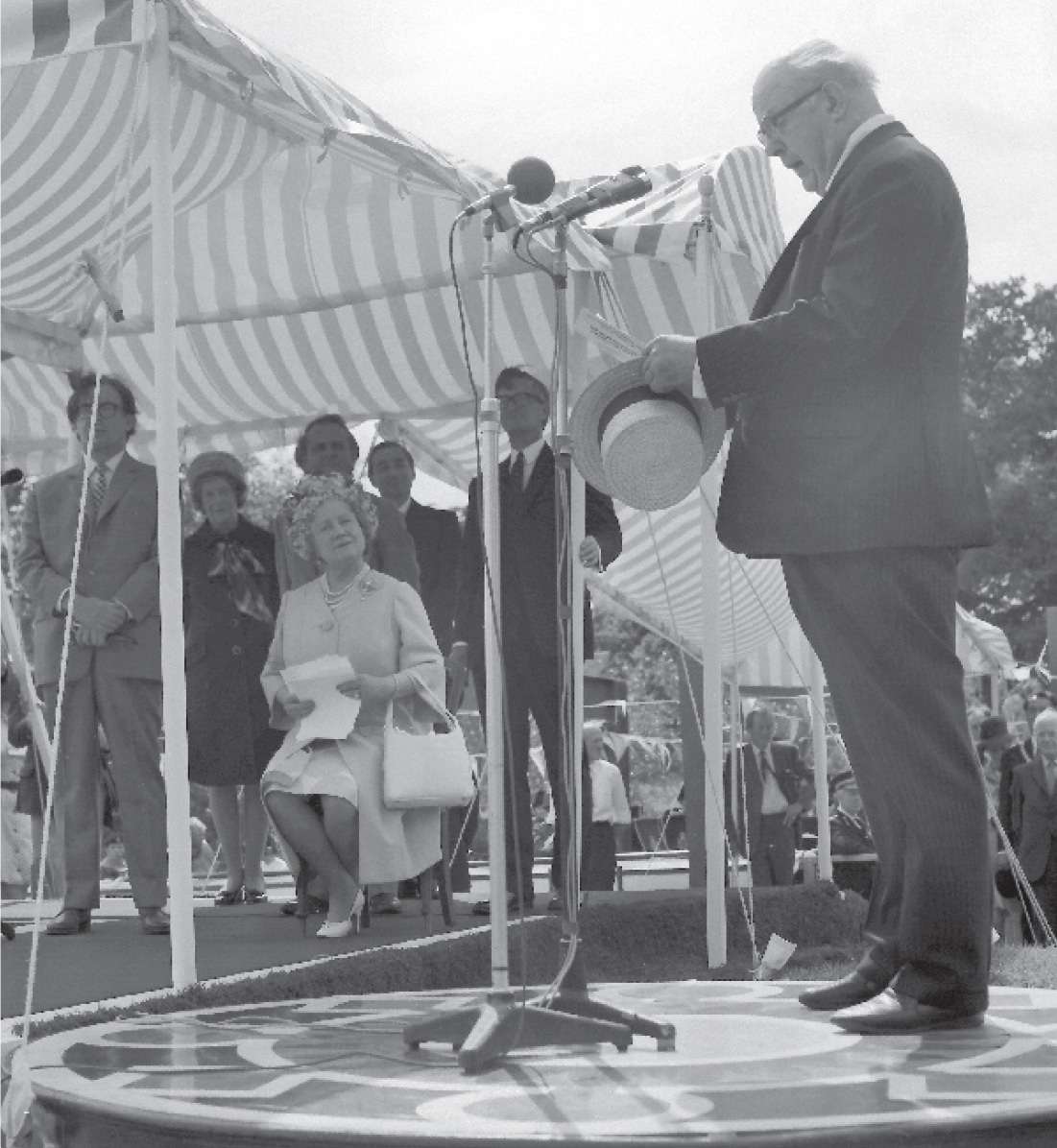
Sweet is the fluting of the blackbird’s note,
Sweet is the ripple from the narrow boat
Your Majesty, our friend for many years,
Confirms a triumph now the moment nears:
The lock you have reopened will set free
The heart of England to the open sea.
Among Aickman’s other restoration achievements were the 35 miles of the Monmouthshire & Brecon Canal with local IWA man Ian Wright. And had Aickman not been moved sideways in the political shenanigans within IWA in the mid-1960s, I like to think he would have stopped the new M6 blocking the northern section of the Lancaster Canal.
Disillusion
Despite his success, by the mid-1970s Aickman felt disillusioned by the continued antics of the BWB and attitudes within IWA to BWB’s proposed further canal closures. In 1973 he moved from Gower Street, surprisingly to a flat in the New Barbarism of the Barbican, and began a restless life. He largely confined his IWA activities to restoring the Upper Avon Navigation partnered with David Hutchings, the man on the ground, in whom he had total trust.
Finding the modern concrete jungle of the Barbican wasn’t conducive to writing his ghost stories, he moved to a flat in Earls Court three years later, and then twice more – once sharing with his literary agent Felix Pearson. Towards the end of 1980 he was diagnosed with cancer, for which he refused conventional treatment. He died in hospital on 22nd February 1981.
Literary Career
Aickman wanted to be remembered, however, not as the saviour of the canals but as a great writer of ghost stories, which became an increasing obsession. There was here an added twist to his stories – he really believed in an unknown supernatural force, which for good or bad influenced our daily lives. Towards the end of his posthumously published autobiography (The River Runs Uphill: A Story of Success and Failure), he insisted: “People will not accept, as Shakespeare did, that the ‘supernatural’ is no special enclave in life, but an all-pervasive element in it.”
Four of Aickman’s collections of ghost stories were republished in 2014 to mark the centenary of his birth. However, I prefer to remember Aickman for what he did to save our inland waterways. I suspect readers inspired to make the blue plaque pilgrimage to his Gower Street home will too.

